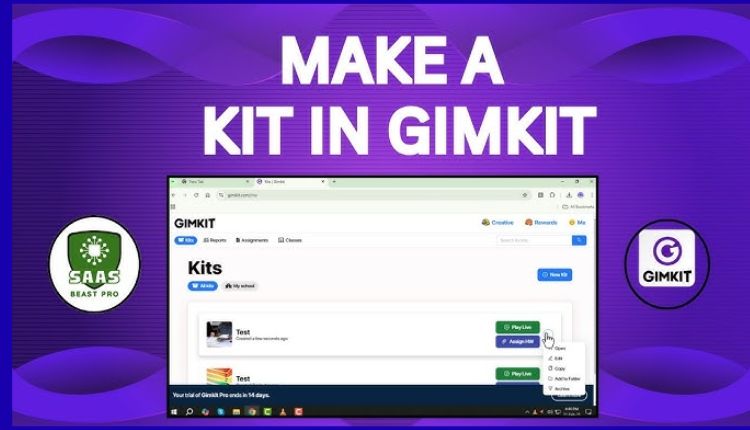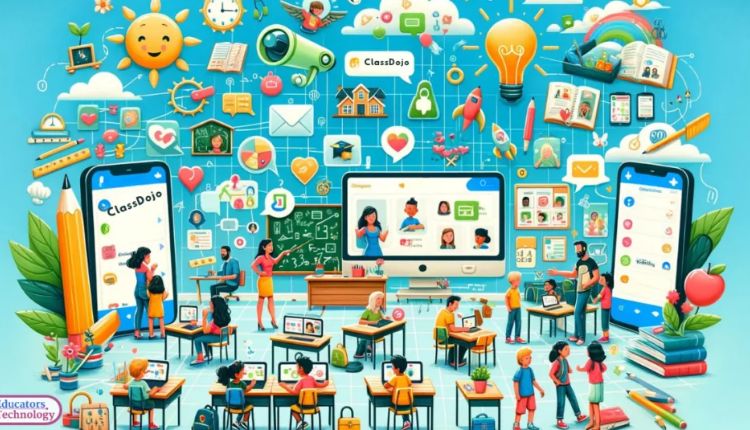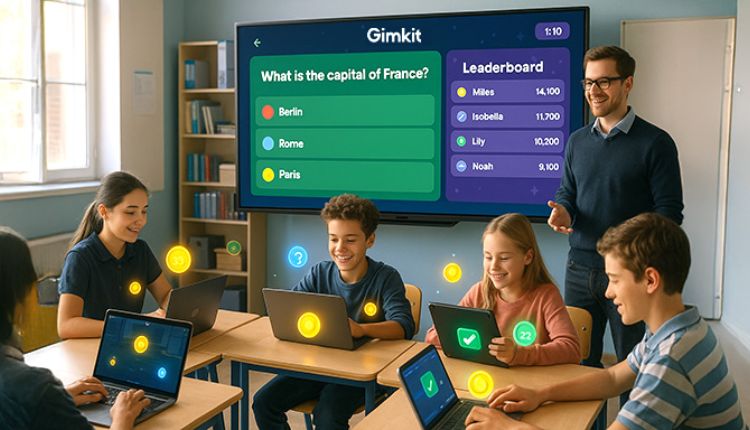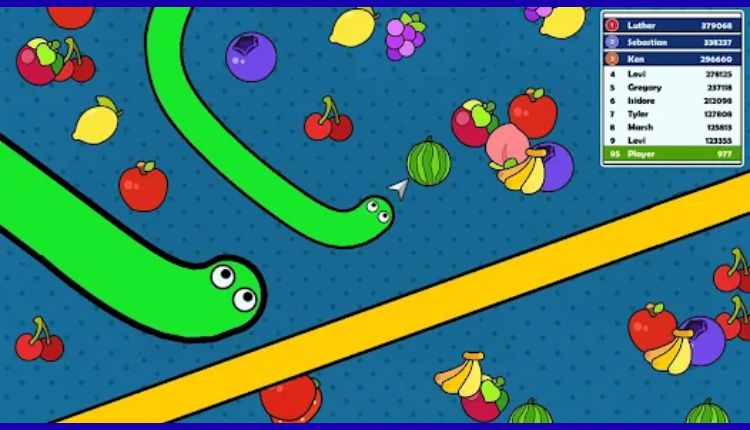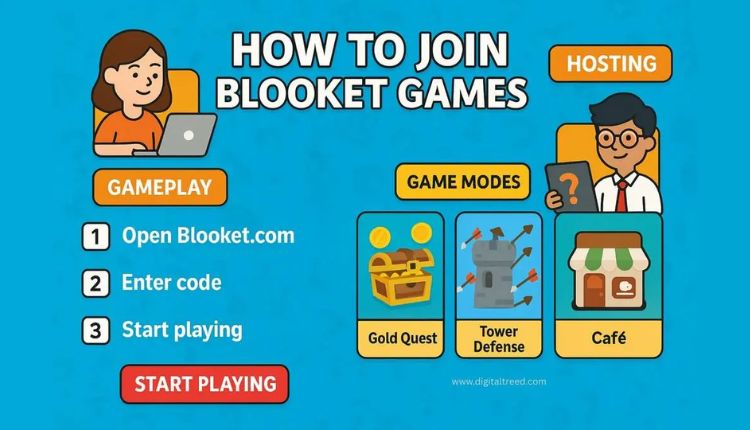One of the instruments that has gained significant popularity is make a Gimkit. Gimkit, designed as a teaching platform based on games, allows teachers to create quizzes and interactive activities that transform traditional study into a dynamic experience. Unlike conventional evaluation methods, Gimkit represents elements of competition, reward, and strategic thinking, making learning more pleasant for students. Understanding how to create Gimkit can significantly increase the involvement in class and students’ participation.
Understanding the foundations of Gimkit
It is necessary to understand the main function of the platform before creating the first make a Gimkit. Gimkit offers teachers a unique way to produce quizzes, often referred to as “sets,” that can be adapted to the subject, class level, and learning levels.
Each set contains questions with a choice of multiple options that students answer in real time. Unlike traditional quizzes, students earn virtual money on correct answers and can use these earnings to buy or upgrade in the game, adding a gamification layer that motivates continued participation.
Setting up the GIMKIT account
Creating make a Gimkit begins with the account settings. Educators can register using email addresses or Google Accounts. After registration, users get access to the platform toolset, including the interfaces for setting sets and the possibilities of managing students and game modes.
The setting of the setting correctly allows smooth creation, editing and sharing of GIMKITS, which makes it easier to integrate into the classroom teaching. In addition, having an account allows teachers to monitor students’ progress and analyse performance metrics, which is invaluable for understanding learning results.
Choosing the right game mode
Gimkit offers more gaming modes that will satisfy different teaching styles and students’ preferences. Each mode has different properties, allowing teachers to select the one that best corresponds to their lessons.
For example, the “make a Gimkit” regime focuses on traditional questions and answers, while the “team regime” supports cooperation between students. Another popular KitColLab mode allows multiple users to contribute to one set. Choosing the right game mode is essential because it directly affects the level of wiring and interaction in the classroom.
Creating questions for your Gimkit
The heart of any make a Gimkit is its question. Creating effective questions requires a thoughtful consideration of students’ learning objectives and abilities. Questions can be simple multiple selections, or may include more complex thinking skills such as applications and analysis.
Educators have flexibility to include images, videos or hints to make the questions more interactive. When creating questions, it is important to ensure clarity and accuracy to prevent confusion. Well-designed questions not only evaluate knowledge but also strengthen learning in an engaging way.
Your Gimkit organization
Once the questions are created, their organization is the next step into the coherent set. Grouping questions according to the topic or level of difficulty helps maintain a logical flow and ensures that students can proceed in a structured manner through the material.
The make a Gimkit platform allows teachers to step through questions, add new content, or delete irrelevant content at any time. The sophisticated organization increases the overall game experience, which makes it easier for students to monitor and remain involved during the session.
Customize appearance and settings
Gimkit offers several adaptation options to increase the visual attraction and functionality of your set. Educators can choose themes, colours, and background images that correspond to the object or atmosphere in the classroom.
In addition, settings, such as the time limits for make a Gimkit, multiplier points, and the availability of Power-ups, can be adjusted to suit specific teaching goals. The adaptation not only improves the involvement of students but also allows teachers to create a unique teaching experience adapted to their needs in the classroom.
Testing your Gimkit
It is advisable to perform a test run before make a Gimkit for students. This allows teachers to identify any errors or irregularities in questions, verify the mechanics of games, and ensure that the kit works smoothly across different devices.
Testing is a decisive step towards preventing technical problems during the real game that can disrupt the learning process. By simulating a session in the classroom, educators can make the necessary adjustments to improve clarity, stimulation, and overall efficiency.
Sharing your make a Gimkit
Once make a Gimkit is ready, sharing with students is simple. Educators can generate a unique game code or share a direct link that allows students to easily connect to the game. The platform supports a personal and remote learning environment, so it is flexible for different class settings.
Teachers can follow real-time students’ participation, provide immediate feedback and adjust the game play if necessary. Sharing Gimkit effectively ensures maximum connection and creates trouble-free learning.
Watching the progress of students
Gimkit provides a detailed analysis that allows teachers to monitor the performance of students throughout the game. Information such as correct and incorrect answers, time spent on every question and overall income helps teachers to identify areas where students can face challenges. Real-time monitoring allows teachers to offer targeted interventions, strengthen learning, and adjust future lessons accordingly. This approach, based on data, increases both the effectiveness of teaching and the results of students’ learning.
Integration of Gimkit into Lesson Plans
Creating Gimkit is only the first step; Equally important is integration into the plans of the lesson. Educators can use Gimkit as a tool for revision, formative evaluation or even as an additional educational activity.
By jamming content with learning standards and teaching objectives, one can maximise the impact on education. In addition, the integration of GIMKIT into regular classroom activities supports consistent involvement and results as an interactive and pleasant experience.
Tips for creating engaging gimkites
If you want to make the best of Gimkit, it is useful to consider some key tips. Different types of questions, incorporating multimedia elements and determining the corresponding levels of difficulty, can significantly increase students’ involvement. Encouraging friendly competition and offering rewards for participation motivates students to actively participate. Regular updates and refreshing sets ensure that the content remains relevant and interesting. By using these strategies, teachers can create tricks that are educational and entertaining.
Benefits of make a Gimkit
The benefits of using Gimkit extend beyond mere gamification. It fosters active learning, encourages collaboration, and enhances critical thinking skills. Students become more engaged, retain information better, and enjoy a positive learning environment.
For educators, Gimkit simplifies assessment, provides actionable data, and introduces a versatile tool for creative lesson planning. Understanding these benefits underscores the importance of learning how to make a Gimkit and effectively implementing it in the classroom.
Challenges and Considerations
While Gimkit offers many advantages, there are some challenges to consider. Technical issues, varying student abilities, and potential distractions can affect gameplay.
Educators must plan for these challenges, ensuring that all students can participate meaningfully. It is also important to balance game-based activities with traditional instructional methods to maintain a comprehensive approach to education. Awareness of these considerations allows educators to maximize the effectiveness of Gimkit while minimizing potential drawbacks.
Conclusion
Creating a Gimkit is a straightforward process that, when executed thoughtfully, can transform the learning experience for students. From setting up an account and choosing the right game mode to crafting questions and monitoring progress, every step contributes to an engaging and effective educational tool.
By leveraging the interactive and gamified elements of Gimkit, educators can enhance student engagement, foster collaboration, and improve learning outcomes. Understanding how to make a Gimkit is not just about technology—it is about creating a dynamic, enjoyable, and impactful educational experience.
FAQs About Making a Gimkit
Q1: Is Gimkit free to use for teachers?
Gimkit offers both free and premium plans. The free version provides essential features, while the paid subscription includes additional customisation options and advanced analytics.
Q2: Can students play Gimkit from home?
Yes, Gimkit supports remote learning. Students can join games using a unique code or link from any device with internet access.
Q3: How many questions can I include in a Gimkit?
There is no strict limit, but it is recommended to keep kits manageable to maintain student engagement.
Q4: Can I reuse a Gimkit for multiple classes?
Absolutely. Gimkits can be duplicated, modified, and reused for different classes or sessions.
Q5: Are there different types of questions available?
Yes, Gimkit allows multiple-choice, true/false, and other interactive question formats to cater to diverse learning needs.

